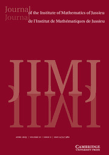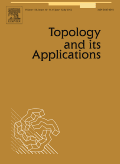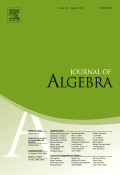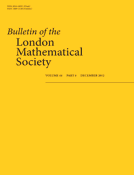
Groups Geometry and Dynamics
Scope & Guideline
Inspiring the Next Generation of Mathematical Innovators
Introduction
Aims and Scopes
- Group Theory and Algebraic Structures:
This area encompasses the study of various types of groups, including Coxeter groups, Artin groups, and mapping class groups. Researchers examine properties such as growth rates, simplicity, and homomorphisms, contributing to a deeper understanding of group actions and their algebraic characteristics. - Geometry and Topology:
The journal emphasizes the geometric aspects of groups, particularly in relation to hyperbolic geometry, CAT(0) spaces, and geometric group theory. This includes studies on geodesics, curvature, and the topological properties of spaces acted upon by groups. - Dynamical Systems and Ergodic Theory:
Papers often explore dynamical systems associated with groups, including actions on various spaces and their ergodic properties. This research area investigates the behavior of group actions over time and their implications for both algebra and geometry. - Applications of Group Theory:
The journal publishes research that applies group theoretic concepts to other mathematical areas, including topology, algebraic geometry, and number theory. This interdisciplinary approach highlights the relevance of groups in broader mathematical contexts. - Computational Aspects of Groups:
Research involving algorithmic problems, computational group theory, and symbolic dynamics is also prominent, reflecting the practical applications of group theory in computational mathematics.
Trending and Emerging
- Hyperbolic and CAT(0) Geometry:
There is an increasing focus on hyperbolic spaces and CAT(0) geometry, particularly in relation to group actions. This trend indicates a growing interest in understanding the geometric implications of group structures and their boundaries. - Quasi-Isometry and Geometric Properties:
Recent publications emphasize quasi-isometries and their applications to various group families. This theme is crucial for understanding how different groups can be related through geometric lenses, fostering deeper insights into group properties and classifications. - Dynamics of Group Actions:
The dynamics of group actions, particularly in terms of ergodic theory and orbit equivalence, is gaining traction. This reflects an interdisciplinary approach that connects group theory with dynamical systems, enriching both areas. - Interplay between Algebra and Geometry:
Emerging research showcases the interplay between algebraic properties and geometric structures, particularly in the context of groupoids and operator algebras. This theme highlights a trend towards synthesizing different mathematical disciplines to address complex problems. - Algorithmic and Computational Group Theory:
The focus on algorithmic aspects of group theory is becoming increasingly prominent, as researchers explore computational methods and their implications for understanding group structures and actions.
Declining or Waning
- Classical Group Properties:
Research focusing on classical group properties, such as finite generation and specific algebraic characteristics, has seen a decline. This shift may reflect a broader interest in more dynamic and geometric aspects of groups rather than purely algebraic inquiries. - Elementary Group Actions:
The exploration of elementary or foundational group actions has diminished. Recent trends suggest a preference for more complex interactions and applications in geometric contexts, leading to fewer studies on basic group actions. - Static Topological Properties:
There has been a noticeable decrease in the emphasis on static topological properties of groups and their actions. Instead, researchers seem to be gravitating towards dynamic and evolving structures within group theory. - Traditional Representation Theory:
While representation theory remains significant, its traditional aspects appear less frequently in recent publications, possibly overshadowed by more contemporary approaches that integrate dynamics and geometry.
Similar Journals

Journal of Combinatorial Algebra
Innovative Insights in Combinatorial AlgebraThe Journal of Combinatorial Algebra, published by the European Mathematical Society (EMS), is a pioneering open-access journal dedicated to advancing research in the fields of Algebra and Number Theory, as well as Discrete Mathematics and Combinatorics. Since its inception in 2018, the journal has been committed to promoting high-quality, rigorous research, evidenced by its 2023 scopus rankings placing it in the second quartile across both disciplines. It serves as a vital platform for academics, researchers, and students to share innovative findings, methodologies, and theoretical advancements within combinatorial algebra, facilitating collaboration and knowledge dissemination in the mathematical community. With its open access policy adopted in 2021, the journal ensures that its content is freely available to a global audience, further enriching the landscape of mathematical research. The journal's editorial board, composed of leading experts, guarantees the integrity and academic excellence of published articles, making it an essential resource for those engaged in the dynamic fields of combinatorics and algebra.

Journal of the Institute of Mathematics of Jussieu
Exploring Innovative Ideas in Mathematical SciencesJournal of the Institute of Mathematics of Jussieu, published by Cambridge University Press, is a leading academic journal that has established itself as a vital resource in the field of mathematics. With an impressive impact factor and a ranking in the top quartile (Q1) of miscellaneous mathematics, the journal serves as a platform for high-quality research from both established scholars and emerging researchers. Spanning from 2002 to 2024, the journal aims to foster collaboration and innovation in the mathematical community by publishing original research articles, reviews, and critical discussions on a wide range of mathematical topics. Although the journal does not offer open access, it remains widely accessible through various academic institutions and libraries, ensuring that critical advancements in mathematics are shared with a global audience. Located in the United Kingdom at the prestigious Cambridge campus, the journal reflects the rigorous standards of its publisher and the rich academic tradition of its home institution.

Advances in Group Theory and Applications
Unlocking Innovations in Algebra and Number TheoryAdvances in Group Theory and Applications is a pioneering open-access journal published by AGTA in Italy since 2016, dedicated to disseminating high-quality research in the fields of group theory, algebra, and number theory. With its ISSN 2499-1287, the journal embraces a broad scope that addresses theoretical advancements and practical applications, making it an invaluable resource for researchers, professionals, and students seeking to deepen their understanding and contribute to these mathematical disciplines. As part of its commitment to accessibility, Advances in Group Theory and Applications has been fully open access since its inception, ensuring that innovative research reaches a wide audience without financial barriers. Although it currently holds a Q4 ranking in the category of Algebra and Number Theory, its growing reputation is reflected in an upward trend in citations and an expanding author base. The journal serves as a critical platform for the exchange of ideas, providing a forum for critical discourse and enhancing collaboration among mathematicians worldwide.

TOPOLOGY AND ITS APPLICATIONS
Unveiling New Dimensions in Topological StudiesTopology and Its Applications is an esteemed journal within the field of mathematics, specifically focusing on topology and its various applications. Published by Elsevier, it serves as a significant platform for researchers, professionals, and students interested in the intersection of geometry and topology. The journal has been operational since 1980 and continues to contribute to advancements in the field with its broad scope that encompasses theoretical developments and practical applications. With an impact factor that reflects its importance in the academic community, it currently holds a Q3 ranking in Geometry and Topology as per the 2023 category quartiles. The journal is indexed in Scopus, ranking #59 out of 106 in its category, which places it within the 44th percentile among other publications. Although it does not offer open access, it remains a vital resource for those engaged in cutting-edge topology research. Researchers looking to engage with innovative studies and contribute to ongoing discussions in this dynamic field will find this journal indispensable.

TRANSACTIONS OF THE AMERICAN MATHEMATICAL SOCIETY
Advancing Mathematical Frontiers Since 1900TRANSACTIONS OF THE AMERICAN MATHEMATICAL SOCIETY, published by the American Mathematical Society, is a premier journal in the field of mathematics that has been contributing to the advancement of mathematical knowledge since 1900. With an ISSN of 0002-9947 and an E-ISSN of 1088-6850, this journal holds a prestigious position in the academic landscape, evidenced by its Q1 rankings in both Applied Mathematics and Miscellaneous Mathematics categories as of 2023. With a Scopus ranking of #97 in General Mathematics and a percentile standing of 75th, the journal is recognized for its rigorous peer-review process and the quality of the research it publishes. Though it does not currently offer open access options, it essentially serves as a vital resource for researchers, professionals, and students seeking critical insights and developments in mathematical theory and applications. The Transactions aim to publish high-quality research articles that foster the exchange and dissemination of ideas, supporting the growth of both theoretical and applied mathematics within the global scholarly community.

Pure and Applied Mathematics Quarterly
Shaping the Future of Mathematics with Every IssuePure and Applied Mathematics Quarterly is a prestigious journal published by INT PRESS BOSTON, INC, focusing on the diverse and evolving field of mathematics. Since its inception in 2007, this journal has grown significantly, currently holding a Q1 ranking in the Mathematics (Miscellaneous) category for 2023, positioning it among the leading publications in the discipline. With a commitment to publishing high-quality research, Pure and Applied Mathematics Quarterly fosters innovation and dialogue within the mathematical community by providing a platform for theoretical advancements and practical applications. The journal remains accessible to researchers and professionals through its ISSN 1558-8599 and E-ISSN 1558-8602, although it does not currently offer open access. As a vital resource for mathematicians, educators, and students, this journal endeavors to expand the frontiers of mathematical knowledge and contribute to the academic dialogue surrounding this fundamental science.

JOURNAL OF ALGEBRA
Pioneering Research in Algebra Since 1964The JOURNAL OF ALGEBRA, published by Academic Press Inc. Elsevier Science, is a premier scholarly outlet dedicated to the field of algebra and number theory. With its impressive Q1 ranking in the 2023 category of Algebra and Number Theory and a solid Scopus rank of #46 out of 119, it stands as a crucial resource for researchers and professionals seeking to deepen their understanding of advanced algebraic concepts. Operating since 1964 and continuing through 2025, the journal boasts a rich history of publishing influential research that drives the discipline forward. While the journal does not currently offer open access options, it remains committed to providing high-quality peer-reviewed content to the academic community. Its comprehensive archive and cutting-edge research articles serve as essential tools for students, researchers, and practitioners aiming to stay at the forefront of algebraic studies.

BULLETIN OF THE LONDON MATHEMATICAL SOCIETY
Pioneering Insights in Theoretical and Applied MathematicsThe BULLETIN OF THE LONDON MATHEMATICAL SOCIETY, published by Wiley, is a distinguished journal that serves as a vital resource in the field of mathematics. With its ISSN 0024-6093 and E-ISSN 1469-2120, this journal has consistently provided a platform for innovative research and scholarly discourse since its inception in 1969. Recognized for its quality, it currently holds an impressive Q1 ranking in the mathematics category, a testament to its significance in disseminating influential findings and trends in the mathematical sciences. Researchers and practitioners can rely on the BULLETIN for its comprehensive coverage of both theoretical and applied mathematics, which caters to a diverse audience ranging from professionals to students alike. Though it does not currently offer Open Access options, its articles can be accessed through institutional subscriptions, ensuring that significant works reach the academic community effectively. With contributions that span over five decades, the journal continues to shape mathematical research and inspire future advancements in the discipline.

International Journal of Group Theory
Fostering Collaboration in Mathematical InnovationThe International Journal of Group Theory, published by UNIV ISFAHAN, VICE PRESIDENT RESEARCH & TECHNOLOGY, serves as a vital platform for researchers, professionals, and students engaged in the fields of algebra and number theory. Established in 2012, this Open Access journal allows unrestricted access to its contents, fostering knowledge sharing and collaboration among the mathematical community. The journal holds a Q3 category ranking in the field of Algebra and Number Theory as of 2023 and is placed in Scopus's Mathematics rankings, reflecting its commitment to advancing mathematical research. With a focus on group theory and its applications, the International Journal of Group Theory aims to publish high-quality research articles, review papers, and short communications that contribute to theoretical developments as well as practical implementations. This journal is an essential resource for anyone looking to stay updated on the latest trends and findings in algebraic structures and their interdisciplinary applications, with its archives running from 2012 through 2025, ensuring a comprehensive repository of knowledge.

HOUSTON JOURNAL OF MATHEMATICS
Connecting Researchers in the Heart of HoustonHOUSTON JOURNAL OF MATHEMATICS, published by the University of Houston, serves as a valuable platform for disseminating significant findings in the field of mathematics, specifically within the realm of miscellaneous mathematics. Despite its current categorization in Q4 for 2023, the journal plays a crucial role in fostering academic discussion and exploration among researchers, professionals, and students alike. With its ISSN 0362-1588, the journal has been publishing original research since 1996, with a recent gap filled from 2022 to 2023, thereby continuing to contribute to the mathematical community. While it does not currently offer open access options, the journal's commitment to quality research maintains its relevance within the field and invites submissions that can elevate its standing. Located in the vibrant city of Houston, Texas, the journal not only emphasizes theoretical advancements but also encourages applied mathematical research that intersects with other disciplines, enhancing its significance and reach.